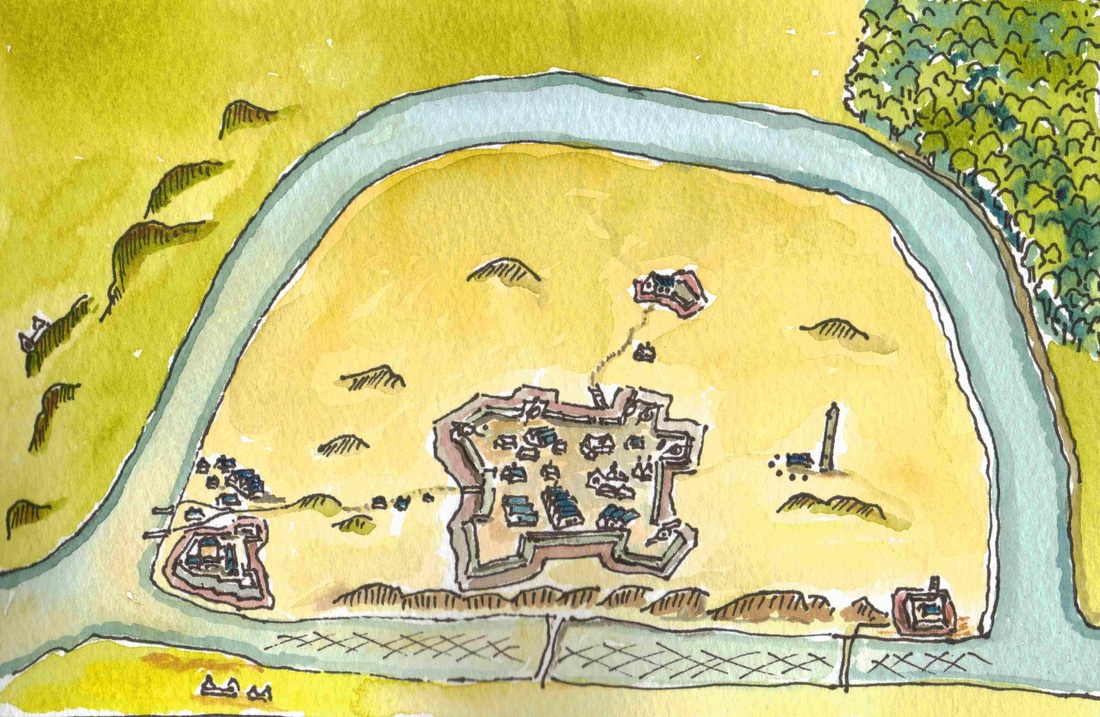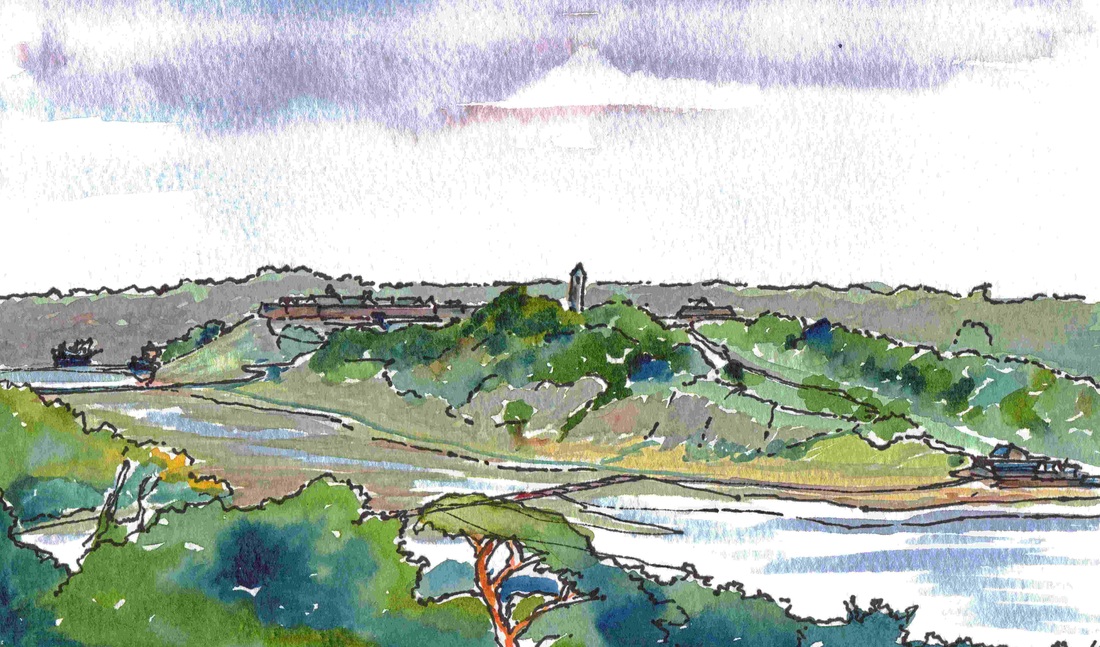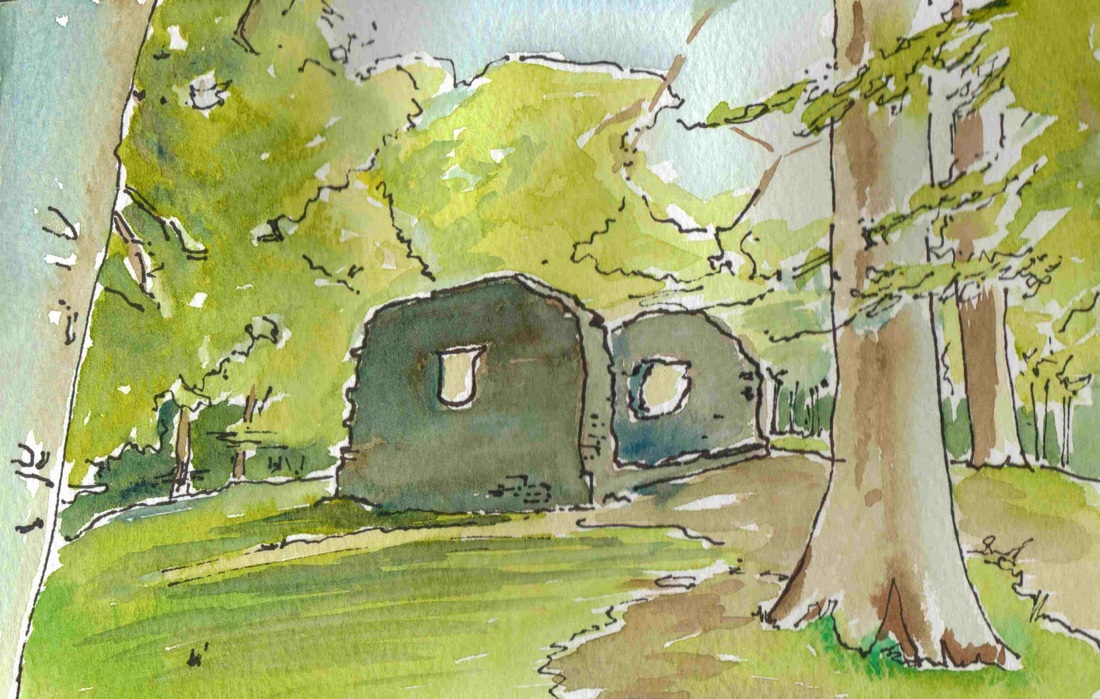The Derrie |
|
|
This is a copy of the first map drawn of Derry with some colour added. It was drawn in 1600 to record the fortifications erected on the island by the English during the Nine Years War. It was one of a number of forts built along the Foyle at that time as part of an attack on the rear supply base of. O’Neill and O’Donnell. The map shows the tower house built for the O’Donnell’s in the 1550s, some of the medieval churches, the round tower and the defences of the new occupiers.
This is a view from the present Letterkenny Road to the south of the island of Derry in 1600. Today’s houses have been omitted and the buildings indicated on Docra’s map added. However, because trees are not indicated on the map to the extent they are shown here, it is unlikely to be strictly accurate. O’Neill and O’Donnell’s war ended in 1604 in defeat at Kinsale. Though they were re-granted most their lands by the new King (James I of England and James VI of Scotland) circumstances had changed and they left for the Continent in 1607. Docra had obtained a royal charter for his settlement at ‘Derrie’ in 1604, but he also left frustrated in 1606. His successor so antagonised Sir Cahir O’Doherty of Inishowen that he rebelled and destroyed the town in 1608. The way was left open for a grand experiment. |
|
Though rebuilt in the 1620's, St Brecan's church currently looks much as it appeared on Docra's 1600 map (left side).
|




